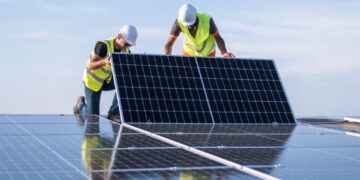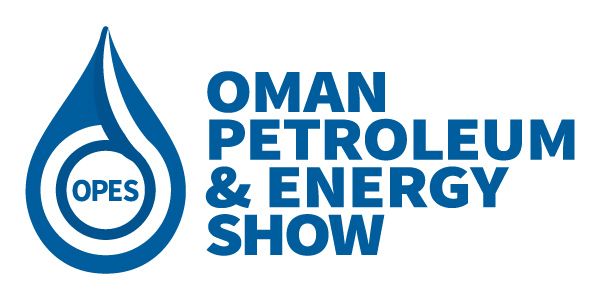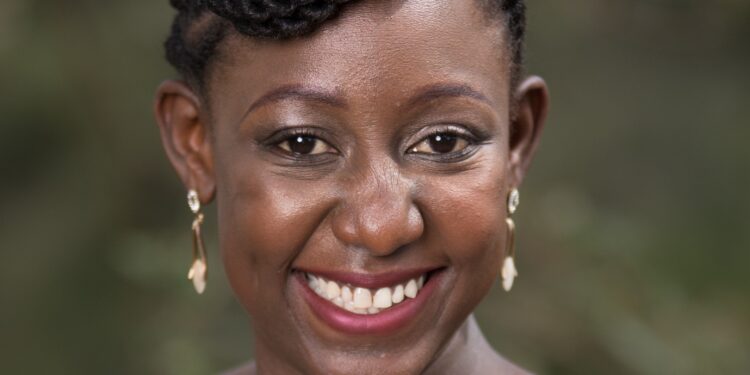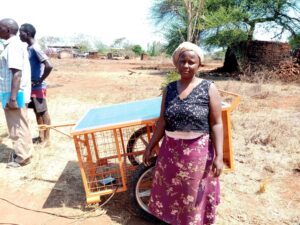The reliable supply of energy is one of many important requirements for significant growth in Africa’s agricultural productivity. For farmers in most African countries, access to fuels or electricity for farm operations or crop processing is limited and costly.
Specifically, sub-Saharan Africa has long been beset with food insecurity. Agriculture in the region is predominantly rainfed, which makes the sector highly vulnerable to climate variability. At the same time, countries in the region also suffer from energy poverty.
Norah Magero, ceo at Drop Access wants to change this narrative.
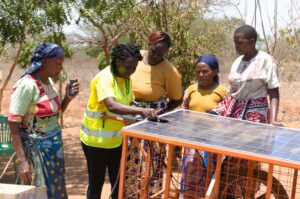
A trained mechanical engineer, she got into the sector in 2015 doing energy audit and realized the many sustainability gaps.
“I saw how you can intertwine energy efficiency and renewable energy technologies in order to ensure that you get the maximum impact,” she tells me.
It was during this time she got to learn about sustainable energy solutions.
“I founded an organization called Dropaccess in 2018 where we were delivering solar lighting solutiuons to rural communities.
At that time, the craze was getting solar lighting for people who don’t have light. After doing solar lighting for rural homes and also actually moving to live in a rural community, I discovered that there is much more on how we can approach renewable energy solutions to achieve universal energy access for countries like Kenya.
So, I decided to go deep and find out what the real energy needs for rural communities are. What came out clearly is that solar light was not enough. This is because if you give them solar light today, in the next 3 years, they will come and tell you to donate another solar lamp,”she says.
A different perspective
This was when she got the idea of productive use of renewable energy, PURE.
“But how about if we approach this issue from a different perspective? What if we can ensure productive use of renewable energy (PURE)?
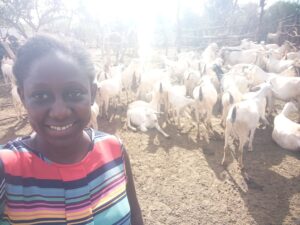
The tricky bit to PURE is that it needs productive use asset like pumping, refrigeration and similar things and we have to build larger systems like micro or minigrid which are very costly and the payback doesn’t really make sense when it comes to financing.
How do we move around this financing and still ensure this access and impact created? At the same time, if you are going to put a certain amount in ensuring universal energy access, then there needs to be revenue generated and not just by big multinational corporations that are building large minigrids or huge energy generation systems.
This is how I ended up focusing on PURE for farming communities because they consist of larger number of rural communities.”
According to the World Bank, 72.5 per cent of Kenyans live in rural communities.
As with other countries in sub-Saharan Africa, rural communities in Kenya are characterised by higher rates of poverty, illiteracy and child mortality. They also have poor access to basic services, such as electricity and sanitation.
“In Kenya, about 80 per cent of rural dwellers are smallholder farmers and these are the people providing food supply for Kenya in general. They provide up to 74 per cent of food supply.
This is a big economy that we can capitalize on because at the end of the day everybody needs food and this led us to the water, energy, food nexus systems.
After realizing that we need to build the economy around energy access, I decided to target rural SMES like farmers and give them solar solutions like pumping and refrigeration and also ensure that they generate income and uplift their communities so that the money trickles back to the rural household,”she says.
Capacity building but at a cost
She tells me one of her major concerns is the gender power structure which she says needs to be balanced in order for communities to embrace the technology.
“One of the biggest challenges I have overcome during capacity building is by the women because for a very long time in our African culture, women don’t have access to financial power.
What I have done is to try to balance the gender power structure so the man, the head of the household will allow the woman to access this technology.
Without this, no matter how much capacity building you do, the women won’t adopt it.
So, you need to find a balance and see how acceptable the solution is in the society. This is why we sensitize their men or the leaders in the society to see if they are going to accept it.
We did a training campaign for a women group and they already accepted to pay for it. 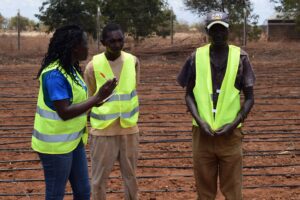
At the last minute, the men came and chased us all away. We left and never delivered anything. These are just learning points that there is a gender power structure in place which has to be balanced. Right now, it is imbalanced because the men own the economy. We need to find a way to the men consenting to the women being involved in clean energy technologies. If they don’t consent, there is nothing we can do.”
Cash poor, asset rich
“My organization delivers portable cold storage technologies. One of the women that we took it to is a dairy farmer. When we got to her home, there was no electricity but she really loved the solution. She asked for the price and I told her kSH 50,000. In my mind, I was wondering how she was going to afford it. Then she said, ‘I will just sell two goats and pay for it’. This made me look at African wealth in a different perspective. We don’t have the monetary exchange but we have resources . We have SMES and vibrant market that if we capitalize on will actually change the narrative that africa is poor.
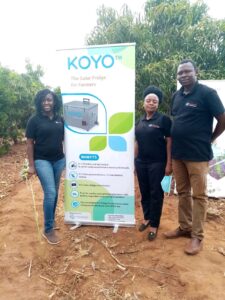
I don’t like the narrative that farmers are poor or that they are the lowest in the society. No, they ensure food is on our table. I also want to bring it closer for people to realize that this is very important the people who live in farming communities are important to sustaining urban sectors.
People who live in rural communities are not necessarily poor. They have asset. What they lack is information to harness this asset into something meaningful and productive,” she explains.
It’s all about women. African women
She notes that changing the narrative about the African farmer and women are what keep her going.
“I am tired of the narratives that ‘Africa is poor’ and ‘women can’t do this’. These are what push me to prove the hypothesis wrong.
Women should have access to water and medical services but they have been denied these things because of how structures are.
I can change this narrative. I can train more women to take up STEM courses. I can train more women to access renewable energy technologies and I’ve seen how much women in rural communities are contributing to the community through farming, SMES.
If we can support them, it means we can show the world that there is potential in these women and that they can contribute to something meaningful in our society.
Eyes on the future
For Norah, she can’t wait to take the water, food and energy nexus evangelism to other parts of Africa where she believes it will be dominant because of the region’s vibrant market.
“We are very much interested in expansion outside of Kenya. If you compare east African countries, Kenya is ahead when it comes to renewable energy access. If we are goimg to create a business case, them we have to think of going beyind the borders.
If you go to Central Africa, there is very little energy access due to reasons like civil wars. Our neighbors, Uganda and Tanzania still have a lot to learn and do to ensure universal energy access. This is a ripe opportunity to deliver technologies.
For instance, consider the cold storage technologies. Centralised technologies are costly and don’t have meaningful payback plan unless it is an integrated system. In most cases, you find there is the need for cold storage but there is no need for solar pumping. In countries like Uganda where the rainfall is sufficient in some parts, there is need for cold storage but there is no need for solar pumping. In such case, you can do portable cold storage unit or household cold storage unit so that each household can take care of its own food waste”, she explains.
Watch full video interview here










